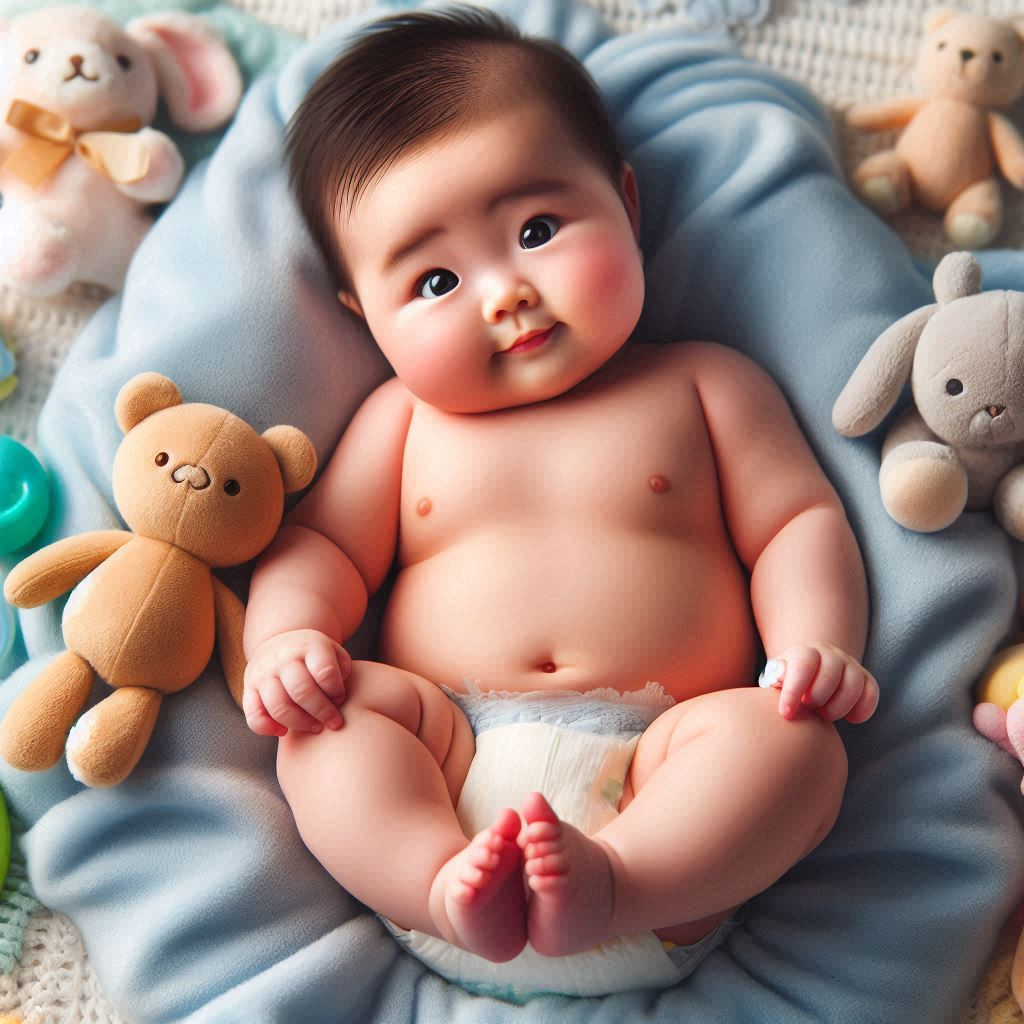Common Symptoms of a Jaundiced Baby
Hey there, new parents and caregivers! Today, we’re diving into the world of baby health, focusing on a condition that might make you worry: jaundice. Don’t fret – we’ve got you covered with all the info you need to spot the signs and take care of your little one.
Quick Answer
The main symptoms of jaundice in babies include yellowing of the skin and eyes, changes in feeding patterns, sleepiness, high-pitched crying, and fewer wet diapers or lighter-colored stools. If you notice these signs, it’s best to chat with your baby’s doctor right away.
What’s the Deal with Jaundice?
Before we jump into the symptoms, let’s break down what jaundice actually is. Think of it as your baby’s body going through some growing pains. When babies are born, their tiny livers are still learning the ropes. One of the liver’s jobs is to process something called bilirubin – a yellow substance that’s made when old red blood cells break down.
In newborns, sometimes the liver needs a little extra time to figure out how to get rid of all this bilirubin. When there’s too much hanging around in the blood, it can cause that telltale yellow tint we call jaundice. It’s pretty common, affecting about 6 out of 10 babies born at full term and even more preemies.
Spotting the Yellow: Key Symptoms to Watch For
1. The Yellow Glow
The most obvious sign of jaundice is when your baby starts to look a bit like they’ve been hanging out with the Simpsons. You’ll notice a yellow tint to their skin and the whites of their eyes. It usually starts on their face and then moves down to their chest, tummy, and legs.
Here’s a tip: Gently press your finger on your baby’s forehead or nose. If the skin looks yellow when you lift your finger, it might be jaundice. This works best in natural daylight.
2. Sleepy Baby, Fussy Feeder
If your little one seems extra sleepy or hard to wake up for feeding time, it could be a sign of jaundice. They might not want to eat as much or as often as they should. This can be tricky because newborns are naturally sleepy creatures, but if you notice a big change in their feeding habits, it’s worth mentioning to your doctor.
3. The High-Pitched Tune
Sometimes, babies with jaundice might cry in a higher pitch than usual. It’s not like they suddenly become opera singers, but you might notice their cry sounds different from their normal “feed me” or “change me” wails.
4. Diaper Detective Work
Keep an eye on those diapers! Babies with jaundice might have fewer wet diapers than usual. You’re looking for at least 4-6 wet diapers a day after the first few days of life. Also, their poop might look lighter than normal – more like pale yellow or clay-colored instead of the usual mustard yellow.
When to Call in the Pros
Now, don’t panic if you spot these signs. Jaundice is usually harmless and goes away on its own. But it’s always better to be safe than sorry, especially when it comes to your little bundle of joy. Give your pediatrician a ring if:
- Your baby’s skin or eyes look yellow
- They’re not feeding well or seem extra fussy
- You notice any of the other symptoms we’ve talked about
- Your mama (or papa) instincts are telling you something’s not quite right
Your doctor might want to do a simple blood test to check your baby’s bilirubin levels. They can then decide if your little one needs any treatment, like some special light therapy (which is basically like a baby tanning session, minus the beach).
A Tale from the Trenches: Our Jaundice Journey
Let me share a little story from when my son, Jake, was born. We were first-time parents, totally over the moon but also kind of terrified. On day three, we noticed Jake was looking a bit yellow. At first, we thought maybe it was just the lighting in our room (hospital lighting isn’t exactly flattering). But when the nurse came in for a check, she confirmed our suspicions – Jake had jaundice.
“Don’t worry,” she said with a reassuring smile. “It’s pretty common. We’ll keep an eye on it and do some tests to see how high his bilirubin levels are.”
Long story short, Jake needed a bit of light therapy. They brought in this futuristic-looking light bed, and our little guy had to hang out there for a day, wearing nothing but a diaper and some cool shades. We joked that he was getting an early start on his summer tan.
The whole experience was a bit scary, but it taught us a lot about paying attention to changes in our baby and not being afraid to speak up when we noticed something different. Jake was just fine after his “spa treatment,” and we became pros at spotting even the slightest hint of yellow in those early weeks.
The Science Behind the Yellow
Let’s get a bit nerdy for a moment (but we’ll keep it simple, promise). Bilirubin is actually a pretty cool substance. It’s a breakdown product of hemoglobin, the protein in red blood cells that carries oxygen. When red blood cells reach the end of their life cycle (about 120 days), they’re broken down, and bilirubin is one of the leftovers.
In adults and older kids, the liver processes bilirubin and sends it out of the body through poop (that’s why poop is brown, by the way). But newborn babies’ livers are still learning this trick. Plus, they have more red blood cells than adults, and these cells have a shorter lifespan, meaning more bilirubin is produced.
Here’s a fun fact: bilirubin is actually a natural antioxidant. Some scientists think it might even have protective effects in small amounts. But too much of a good thing can be harmful, which is why we keep an eye on jaundice in babies.
Jaundice: Not Just a Newborn Thing
While we mostly talk about jaundice in newborns, it’s worth knowing that it can sometimes show up a bit later, too. This is called breast milk jaundice, and it can happen in the second or third week of life in some breastfed babies.
Don’t worry – this doesn’t mean you need to stop breastfeeding. In fact, feeding frequently can help babies pass more bilirubin in their poop. If you’re concerned about breast milk jaundice, your doctor can guide you on the best approach.
Mythbusting: Jaundice Edition
There are a few myths floating around about jaundice. Let’s clear some of them up:
- Myth: Jaundice only affects babies born early or those with health problems.
- Fact: Nope! Even full-term, healthy babies can develop jaundice.
- Myth: If my baby has jaundice, I’m doing something wrong.
- Fact: Jaundice is a normal part of many babies’ early days. It’s not caused by anything you did or didn’t do.
- Myth: Putting my baby in sunlight will cure jaundice.
- Fact: While a little indirect sunlight won’t hurt, it’s not a reliable treatment. Stick to your doctor’s recommendations.
Wrapping It Up: Your Jaundice Action Plan
Alright, let’s sum up what we’ve learned about spotting jaundice in your baby:
- Keep an eye out for yellowing of the skin and eyes
- Pay attention to changes in feeding patterns and sleepiness
- Listen for any unusual high-pitched crying
- Monitor diaper output and poop color
- When in doubt, reach out to your pediatrician
Remember, jaundice is usually just a bump in the road of your baby’s early days. With a little knowledge and attention, you’ll be well-equipped to handle it if it pops up. Trust your instincts, don’t hesitate to ask questions, and enjoy those precious newborn snuggles – yellow tint and all!
What’s Next?
Now that you’re a jaundice detective, why not brush up on other newborn care tips? Check out our guides on newborn feeding, sleep patterns, and when to call the doctor. And hey, if you found this helpful, share it with your fellow new parent friends. We’re all in this adventure together!
Got questions or your own jaundice story to share? Drop them in the comments below. We’d love to hear from you and keep the conversation going. Here’s to healthy, happy babies and confident, well-informed parents!

Jessica Winter is a passionate parenting blogger with two years of experience guiding new and seasoned parents through the joys and challenges of raising babies. Her insightful posts blend personal anecdotes with expert advice to offer a warm and practical perspective on modern parenting.

